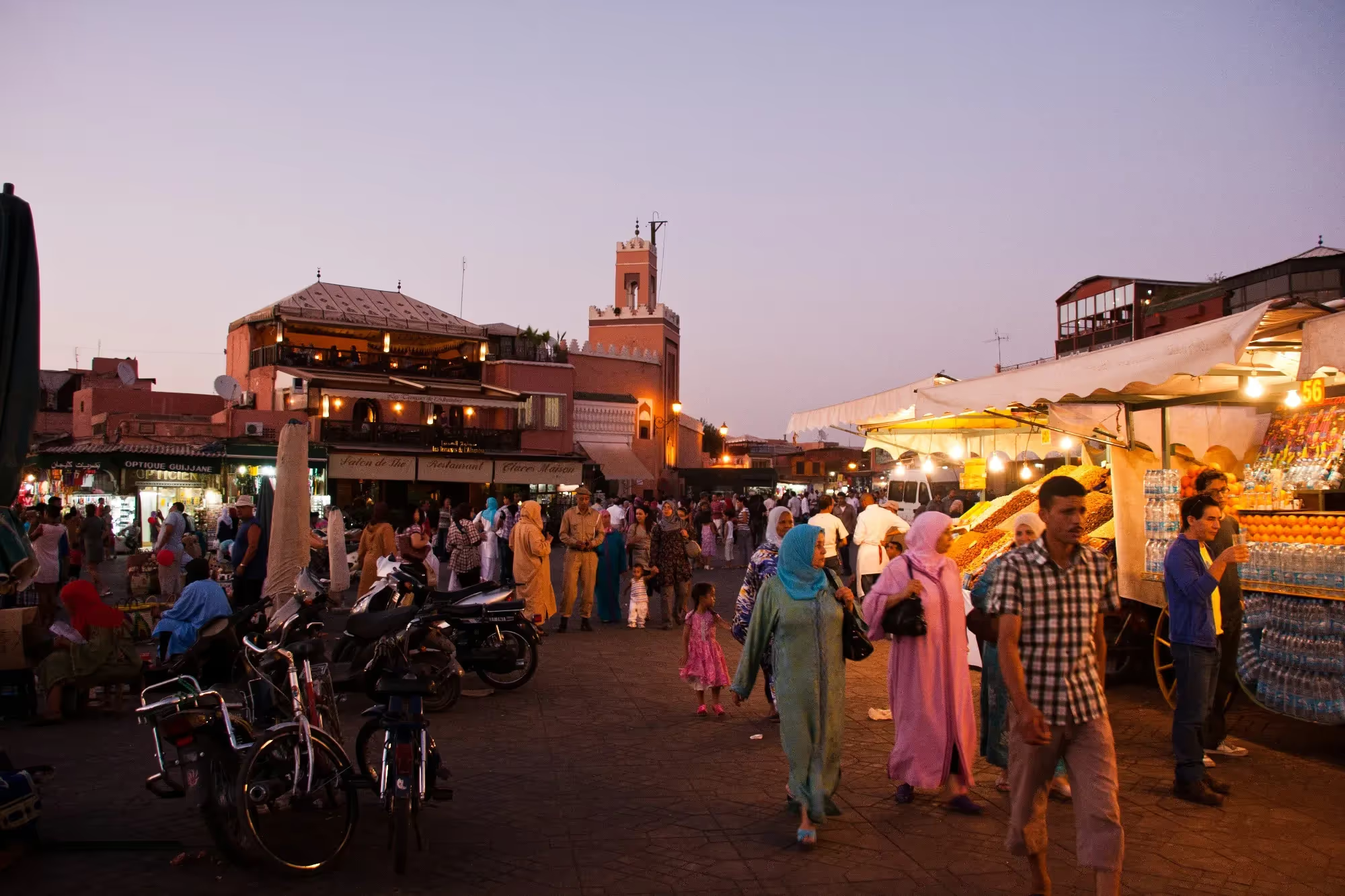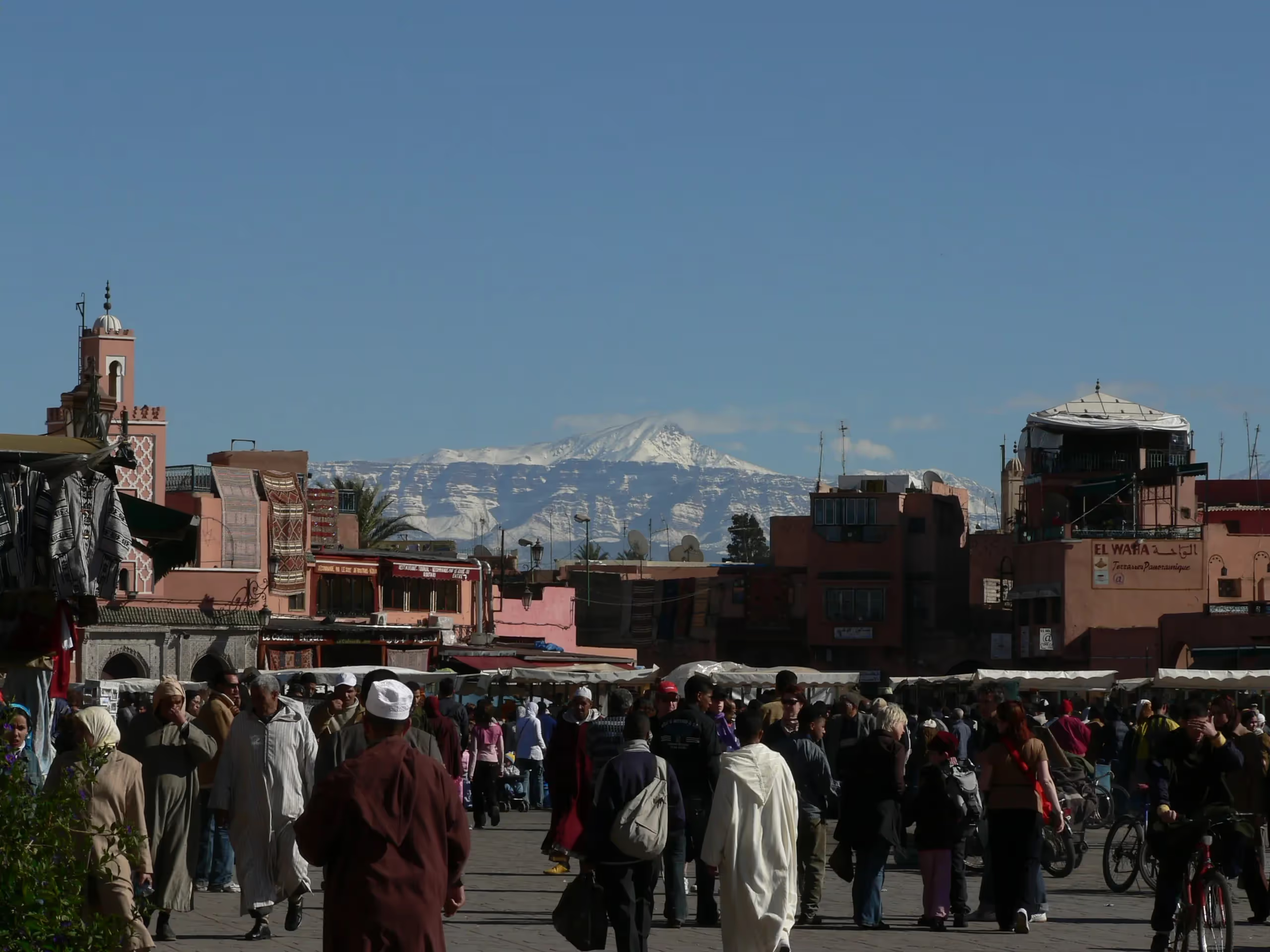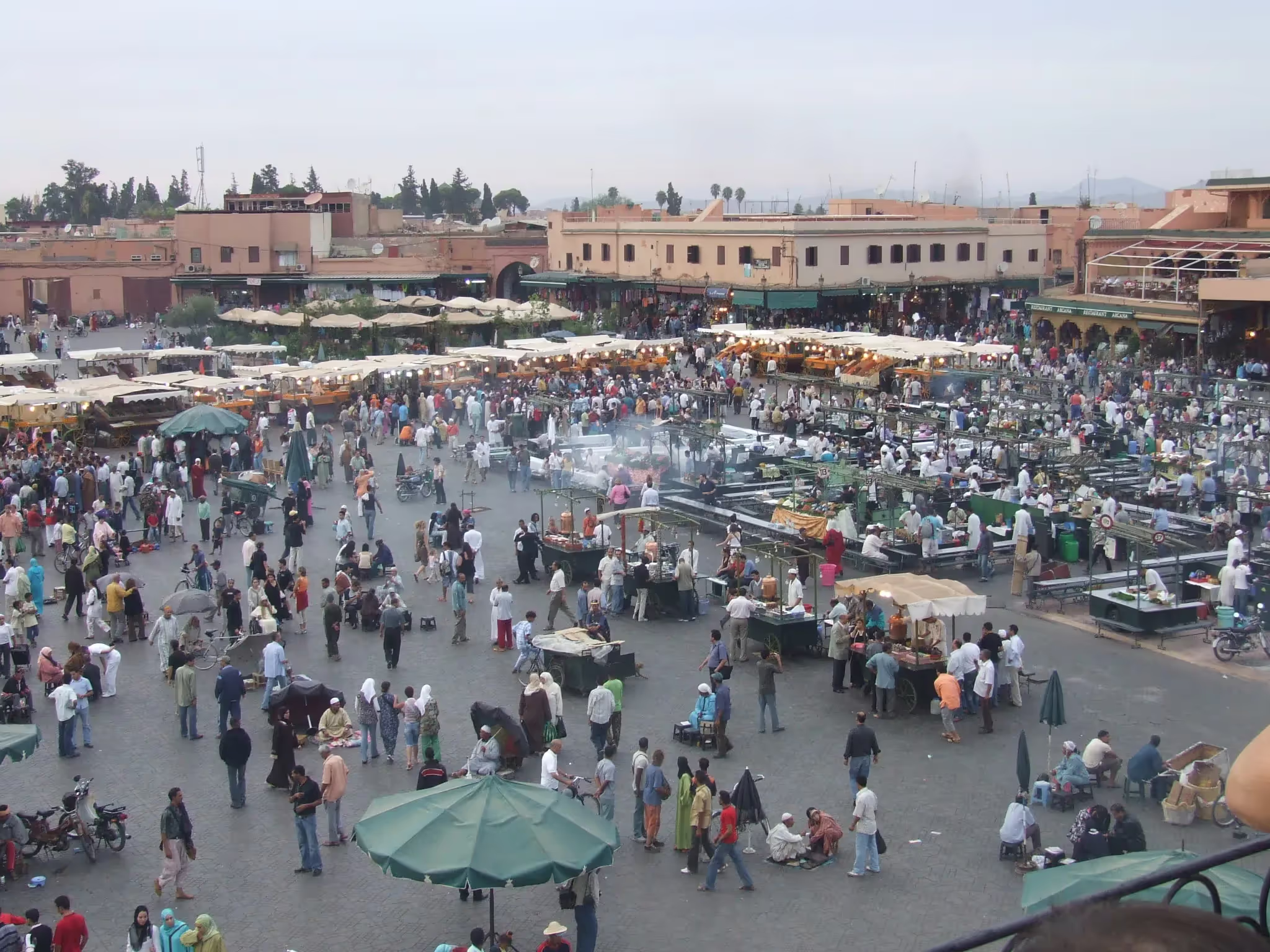A biweekly newsletter with public space news, resources, and opportunities.
A curated dispatch on all things public markets plus the latest announcements from the Market Cities Program.
Please note that these Hall of Shame nominations were written in a moment in time (most over a decade ago) and likely have since changed or even been transformed. If the above entry is now great, or still not so great, go ahead and comment below on how it has evolved or nominate it as a great place.


On one side of the square stands a traditional North African market, or souk, selling food, spices, carpets, brass and wood works, and tourist trinkets. By day, orange juice and water vendors vie for business while the number of buskers, snake charmers, henna artists, medicine peddlers, monkey handlers, and traditional Chleuh dancers gathering on the square steadily increases. All through the day, and well into the night, the marketplace offers an eclectic variety of services such as dental care, traditional medicine, fortune-telling, henna tattooing, and storytelling for children. By nightfall, when the crowd reaches its peak, the entire square transforms into a sensory spectacle, as musicians begin arriving in force and countless food stalls set up their smokers and grills in the designated cooking area.
The bazaar is well known for its hundreds of colorful umbrellas that shield shoppers, performers, and merchants from the harsh North African sun. Surrounding the square there are also numerous hotels, restaurants, gardens, and cafés that allow people to escape the heat and chaos of the market, while still watching over its activities. As a market, theater, and public gathering place, Jemaa el-Fna is a repository of Moroccan cultural traditions both ancient and new. In 2001, UNESCO declared the site a “Masterpiece of World Heritage,” which has helped the market continue to thrive despite the development and modernization pressures of the 21st century.
Located beneath the foothills of the Atlas Mountains in the heart of the Medina, Jemaa el-Fna has served as Marrakech’s main market square since its foundation in the 11th century. Around 1050 AD the plaza was the site of public executions, hence its name Jemaa el-Fna, which means “assembly of the dead.” Today the market bridges the old and new sections of Marrakech, and it continues to serve the community as a vibrant hub for trade, social life, and cultural expression. Like the city itself, Jemaa el-Fna has gone through extended periods of decline and revitalization throughout its long history. During portions of the 20th century the square was also used as a transport station, but since 2000 it has been closed entirely to automobile traffic. A lively source of entertainment for the local community as well as travelers, the marketplace functions as both a traditional market and an open-air stage for various musical, religious, and theatrical performances.







*Please note that these Hall of Shame nominations were written in a moment in time (most over a decade ago) and likely have since changed or even been transformed. If the above entry is now great, or still not so great, go ahead and comment below on how it has evolved or nominate it as a great place.